
When it comes to potty training a puppy there will most likely be accidents in the house. Training a dog to go to the bathroom outside takes time and patience. Dogs prefer to go to the bathroom in the same area. Frequent trips outside help your dog establish an area where it is suitable to go to the bathroom. With their scent of smell, the familiarize themselves with an area and use the scent of previous outings to determine where to go.
However sometimes you might not get outside in time and an accident can occur in the house. Cleaning and maintaining these areas is just as important as establishing a spot outside. Because dogs use their sense of smell to help determine where they should go, confusion can occur when the smell of their urine is in your home. If the area is not properly cleaned, it is very likely your dog will return to that spot and find it a preferable area to relieve them self. This can cause an endless battle between whether your dog pees outside or inside.

By cleaning any pet stains you have in your home, you are obviously making the home more welcoming, but you are also deterring your dog from going back in that spot.
There are countless suggestions and methods recommended for cleaning pet stains. Unfortunately they don't always work. One of the most common remedies for cleaning pet stains is vinegar or ammonia. They are usually recommend because they are cost effective, natural and readily available. Both have a level of acidity high enough to break down stains without damaging surfaces. While they can naturally break down physical stains, they are quite possibly the worst thing you can use to clean pet stains. The level of acidity is similar to some of the elements in urine. While they may smell clean to a person, a dog can smell the acidity. To them, this scent is no different then the acid found in urine. As a result, your dog is very likely to keep going in that spot. Using vinegar and ammonia may only increase the likelihood of you running into problems getting your dog to go outside. For them, the scent of vinegar and ammonia are an inviting foundation for them to do their business. When people state they have cleaned the area, but their dogs keep peeing on the carpet, chances are they have used either vinegar, ammonia or a cleaning product that contains either of the two.
The next most often recommended cleaning method suggested are enzymatic cleaners. Enzymatic cleaners are constantly marketed as a miracle cleaner for pet stains. They are boastful of their natural properties and play heavily on the green factor. When discussing enzymes, it is important to understand how they work. An enzymatic reaction occurs when two elements interact and react to each other. The desirable outcome is that one will break the other down. This process is a very common one, and very natural indeed. The human body itself contains enzymes which break down food, rebuild cells, and so on. What is often not addressed by enzymatic cleaners is that enzymes are super sensitive. They only react to each other when the conditions are 100% exact. Variables can throw off the balance of how these enzymes work, in turn preventing them from doing anything. Temperature, moisture and age are some basic factors. Complexities arise when factors are considered such as the diet of the dog which alters the structure of the waste, other chemicals previously used on the area, the composition of the surface being cleaned. The odds of an over the counter, mass produced enzyme purchased at a pet store matching the specifications of a single animal's waste is in reality quite minimal. Enzymes are often compared to a lock and key scenario. While there can be a million keys and only one lock, only one specific key will open the lock. Likewise, there can be a million enzymes, but only the right one will work based on the structure of what it is introduced too.
In addition to the issues involved in getting the enzyme to react to a specific stain, there are some other complications. When used, enzymes generally seem to do what is expected. The stain and odor seem to go away, but then only return a few days later. Enzymes do not have the power to eliminate stains in their entirety if not used in abundance. Pet stains, while clearly visible in carpet, also seep below the carpet into the padding. Enzymes are driven by their energy. Often, this energy is reduced as the enzymes are introduced. By the time they get into the padding, they have worn themselves out. As a result, the immediate odor from the surface is removed, but over time, the stain in the padding which was not removed by the enzymes begins to smell. The smell is typically worse then before because of moisture that may be in the padding. Enzymes do not have the capability of disinfecting. With the smell returning, and the stain not being properly treated under the surface, a dog owner again faces the challenge of stopping their pet from going to the bathroom at the source of the odor.
Household cleaners are another option suggested for cleaning pet stains. Traditional spray type cleaners are the easiest and most readily available way to remove spots. These cleaners will not help you when it comes to cleaning stains from puppy stains. There are several problems when it comes to using these types of cleaners. First, they are basically designed as surface cleaners. While many of them can remove stains, they are referring to visible stains. Using a spray type cleaner may eliminate the visual stain, however they are not designed to clean any deeper then the surface. Cleaning with such a cleaner might give you peace of mind by removing what you can see, but it does nothing as far as removing what is in the padding. Here again you face the problem of the odor not being removed. Next, many of these cleaners are soap based. Soap attracts dirt and dust. There are some cleaners that will actually make your carpet look dirtier or make the stain reappear. This is from the attraction of the dust and dirt. The soap can also clog the pores of the fibers in your carpet. Clogging the pores also contributes to you carpet looking dirtier. These cleaners may work well for food spills or dirt stains, but they are not going to discourage your dog from going in that spot. Some of these cleaners will also destroy your carpet. Many carpets are pre-treated with stain resistant chemicals. Chemicals, particularly those that oxidize, can severely discolor your carpet. The last thing you want to do is replace carpet because it was cleaned wrong.
The smell is probably more important to remove then the visible stain. It is the odor that draws your dog to that spot. It is the odor that tells your dog that it is OK to go to the bathroom there. Remember, just because you can't smell it doesn't mean your dog can't. A huge problem with odor issues is people too often try to mask the odor. Baking soda, fragrance sprays and room deodorizes are not going to help you teach your dog not to go to the bathroom in the house. While all of these items can hide the urine odor (from you), your dog will still be able to smell the urine that you can't. Once again, it is important to note that the actual carpet has to be deodorized . . . and in a manner where the actual bacteria from the urine causing the odors is killed and completely removed . . . not just masked.
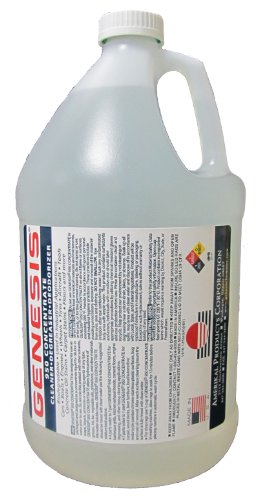 Genesis 950 Concentrate Carpet Cleaner, Pet Stain Remover & All Purpose Cleaner - Gallon
Genesis 950 Concentrate Carpet Cleaner, Pet Stain Remover & All Purpose Cleaner - GallonObviously cleaning your carpets properly will remove any smell or odor that might draw your pet to that spot. While there are many suggestions as to how to remove those smells, the best way to properly and safely do so is with a surfactant based cleaner. These type of cleaners work with water to actually break the structure of the stain. Once the bonds to a stain have been altered, the stain can be broken down and flushed away. Perhaps the best surfactant cleaner available is Genesis 950. Not only does it work as a surfactant and break a stain's bonds, but it also kills bacteria and in turn deodorizes. Doing so removes the odor completely.

This carpet shows an area where the animals were left when nobody was home. Over time, the stains worsened. Both urine and vomit stains could be found through the carpet. As time went by, numerous attempts were made to clean the carpet. Enzymes failed to remove all of the stains. Household cleaners were used and actually made the carpet look worse. The gray blotches came from typical spray type cleaners. These cleaners left behind gray marks where they actually attracted the dirt and grime. The photo shows well over a year in staining and cleaning attempts.

With proper cleaning, this carpet went from needing to be replaced to looking like brand new. All the stains were removed as was the odor. It also discouraged future accidents. In about 30 minutes, years of filth, stains and odor were completely removed.
To properly remove pet stains and to completely remove the odor, the are has to be thoroughly cleaned. Do so by using a surfactant based cleaner like Genesis 950 in a steam cleaner. In a machine where you have two compartments, one for fresh water and one for solution, fill the solution compartment up completely with Genesis 950. Set your machine on heavy and begin cleaning. In a machine where there is one container that holds both solution and water, fill the container with a mix of Genesis 950 and water ranging anywhere from 1 part Genesis 950 to 7 parts water, up to a 50/50 mix. It will all depend on the severity of the area you are cleaning. Once you have filled the compartment, begin cleaning the carpet. After you have gone over the area, allow the mixture of solution and water to sit for anywhere from 5 minutes to an hour. The 950 will begin working to break the bonds of the stains in the carpet. The longer it sits, the more it will break down.
After you have allowed the solution to sit, go over the carpet a second time using ONLY water in the tank. This will flush everything that has been broken down out of the carpet. Upon starting the rinse process you may see the water being returned brackish, perhaps even mud like. This is a result of the 950 not just breaking down pet stains, but also removing any dust, dirt and grime that is within the carpet. The rinse process may be repeated until the water begins to be returned to the machine clear.
After rinsing, go over the carpet using the machine as an extractor. Rather then distribute more water, simply pull out any moisture you can using the machine. Fans and dehumidifiers can be used to assist the drying process. One benefit to Genesis 950 is that it will kill any bacteria in the carpet. Because of this, as the carpet dries, you do not have to worry about any mold growth from the moisture as it dries. Genesis 950 also evaporates quickly, making the drying process a little faster then soap based cleaners.
When your carpet is properly maintained, you are making the potty training process easier. Removing any previous odor or scents will discourage your pet from going in unwanted spots. Not only will it prevent your dog from sniffing out an area, it will make your home look and smell amazing.
 Through A Dogs Ear: Sound Therapy For You And Your Dog
Through A Dogs Ear: Sound Therapy For You And Your Dog
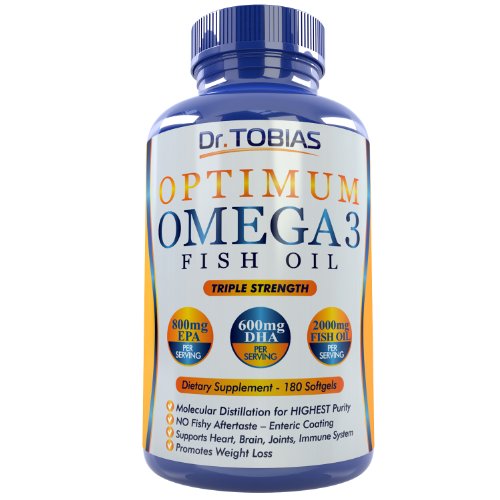 The Importance Of Feeding Your Dog Fish Oil
The Importance Of Feeding Your Dog Fish Oil
 Dogs :: 3 Reasons Why You Would Want a K9 Unit (Page 1 of 2)
Dogs :: 3 Reasons Why You Would Want a K9 Unit (Page 1 of 2)
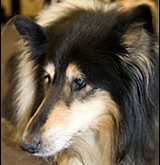 Dogs and Glaucoma
Dogs and Glaucoma
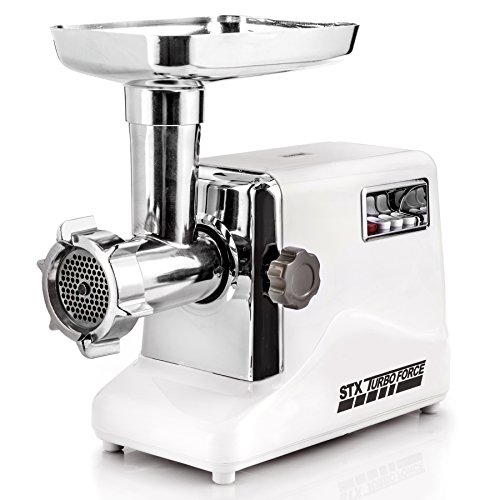 Canine Nutrition and Wellness Part 2: Feeding Your Dogs Homemade and Unprocessed Meals
Canine Nutrition and Wellness Part 2: Feeding Your Dogs Homemade and Unprocessed Meals
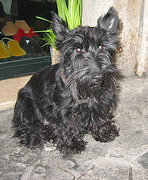 Scottish Terrier Breeder Interview: Cindy Cooke Tells Us About Scotties
Scottish Terrier Breeder Interview: Cindy Cooke Tells Us About Scotties
Copyright © 2005-2016 Pet Information All Rights Reserved
Contact us: www162date@outlook.com